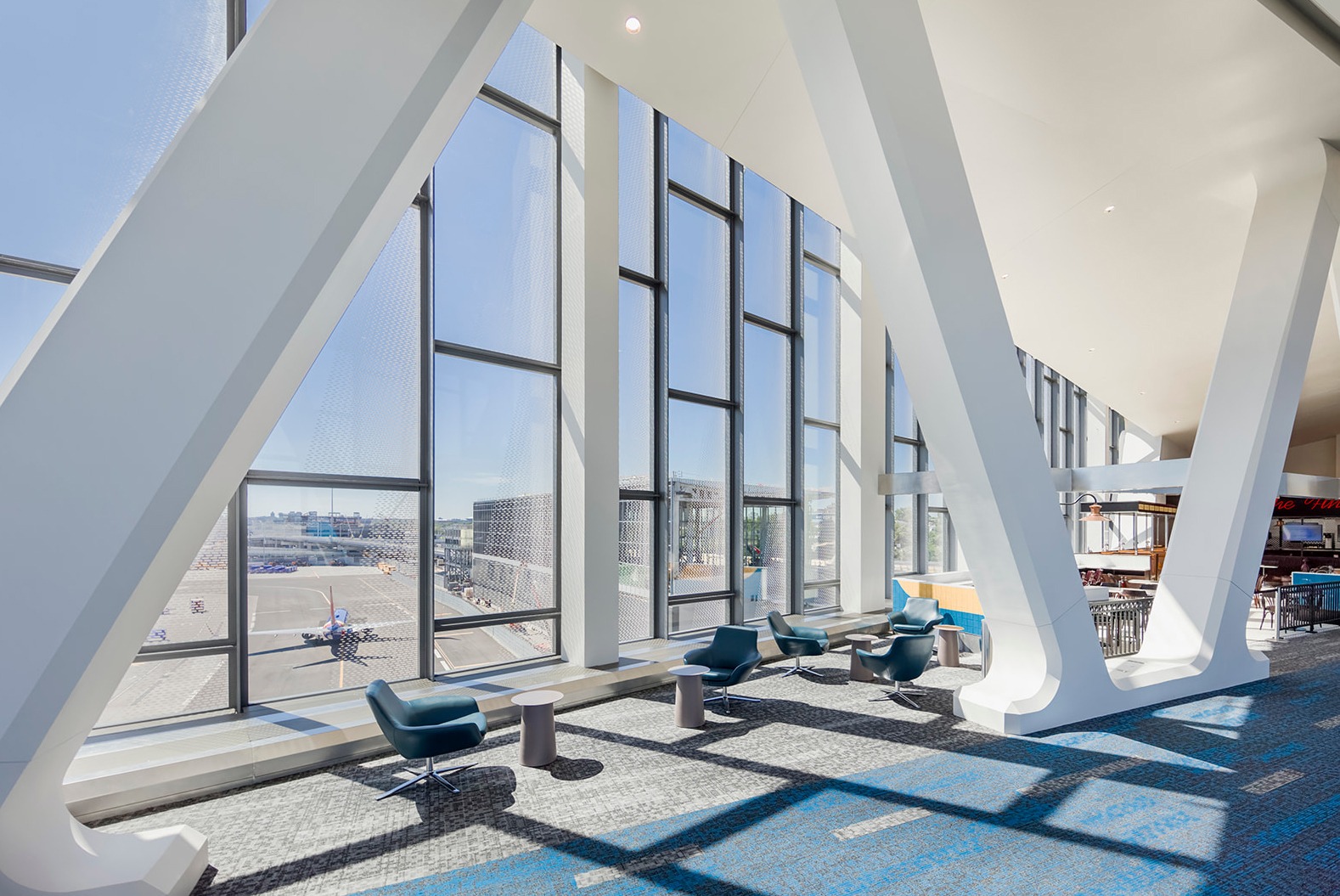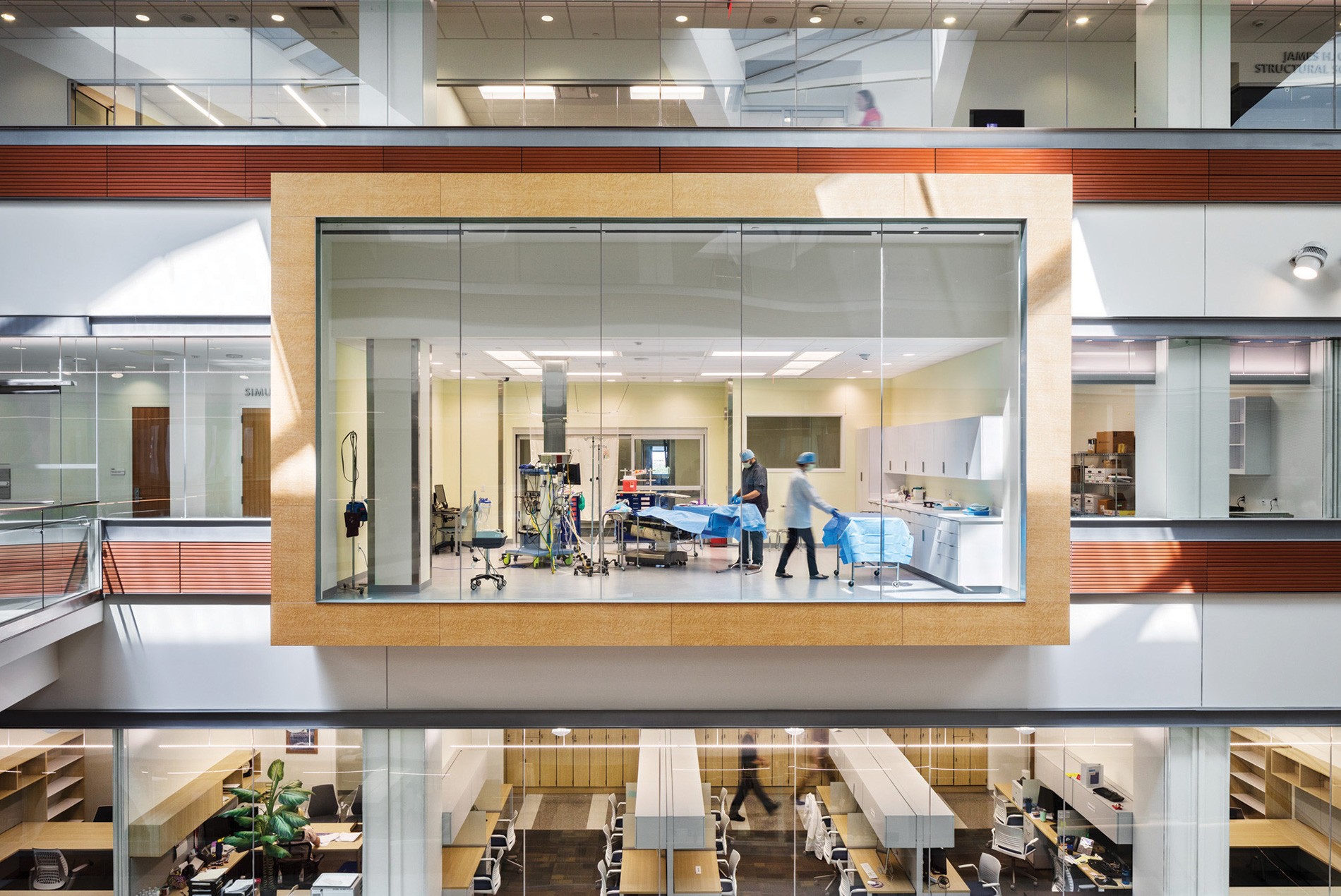How HOK’s first global technical chair is elevating building performance, quality and collaboration across the firm’s 1,700‑person practice.
Stephen Weinryb, FAIA, LEED AP, grew up learning to draft in Brooklyn Technical High School classrooms and now oversees technical rigor for HOK worldwide. In recent years, he has helped realize complex projects such as LaGuardia Airport’s Terminal B, the NewYork‑Presbyterian David H. Koch Center and the University at Buffalo Jacobs School of Medicine and Biomedical Sciences.
In March, he became HOK’s first technical chair, formalizing years of guidance on standards, training and project troubleshooting. Based in New York, he also serves as technical principal for the firm’s Northeast studios.
In this conversation, Weinryb explains why disciplined building science underpins every design move—and what it will take to stay ahead in an era of AI and robotics.

How do you define technical excellence, and why is it essential for great design?
Weinryb: Technical excellence is really about being able to execute a design so it meets the client’s goals, stays true to the design vision and satisfies all the physical requirements of the building.
A technically excellent building must be constructible. It can’t leak, it must perform as intended and it must stay on budget. Without technical excellence, even the most beautiful design falls short.
You can’t write the Great American Novel if you don’t know grammar and vocabulary. It’s the same with architecture. You can’t design a great building if you don’t know how materials function and how they go together in a system.
Physics rules. Constraints fuel creativity. Our job is to master both.
What priorities have you set as technical chair to embed consistent best practices across the firm?
My first goal is ensuring we operate as one cohesive HOK, and not a collection of separate offices.
We’ve elevated mandatory technical training to raise the technical baseline across every studio.
We’re enhancing our model authoring techniques so our BIM deliverables can increasingly serve as usable information that clients depend on. One day these may become contractual deliverables. Even if our models never become deliverables, these improved modeling efforts will improve efficiency and produce better‑coordinated deliverables.
And more importantly, we’re insisting on early involvement of our technical leaders in the design process starting at the concept stage.
The project architect, project manager and project designer are all equal partners in executing the design. The role of the technical leader isn’t to dictate, but to be one of those partners at the table, helping the team succeed together.
Which emerging tools will most enhance technical rigor in the next five years?
Digital tools are getting more powerful and will help us work faster. But they only help if you already understand how buildings go together.
Take checklists. They’re great if you know what you’re looking at, but they don’t make you an expert. Similarly, our digital tools can be a huge help, but they don’t replace the expertise that designers need to understand how materials and systems work together.

Can you point to a moment when building science advances changed project delivery—and what’s next?
There’s no single ‘eureka’ moment. Innovations in building science tend to emerge gradually as data is accumulated and ideas are refined over time through testing, iteration and experience.
Though our digital tools keep getting better, construction is still done by people with screw guns and taping knives. But if you look back five years later, you’ll see how far we’ve come in moving the profession forward.
Looking ahead, I believe the next true revolution will come from robotics with AI attributes. That will be the breakthrough that changes how we physically build. You’ll start to see robotics in construction in the next 10 years. It will be everywhere in 20 years and standard practice in 30.
Where do project teams most often slip—and how can they stay on track?
The biggest issue I see is when teams don’t finish the work required in each phase before moving on. When earlier phases slip, everything else gets squeezed.
My advice is to make decisions early. If you’ve already selected something as basic as a sealant color during design, the submittal takes 30 seconds to approve. Finishing each phase before starting the next saves enormous time, energy and money.
And when things don’t go perfectly, we don’t do postmortems to point fingers. We look for patterns and how we can learn from understanding what happened.
What guidance do you give junior staff who want to deepen their technical expertise?
Be relentlessly curious. Do your homework before asking questions. Don’t just show up with a question—show up with two or three ideas.
Read broadly. Learn what’s behind manufacturer claims and do your own critical thinking.
I also talk about the ‘25 percent rule.’ If you’re mostly a designer, aim to be at least 25 percent technical. If you’re more technical, aim to be at least 25 percent designer. The best architects speak both languages.
Finally, the contractor and architect must be partners. When you help them out of a jam, they may return the favor someday.


